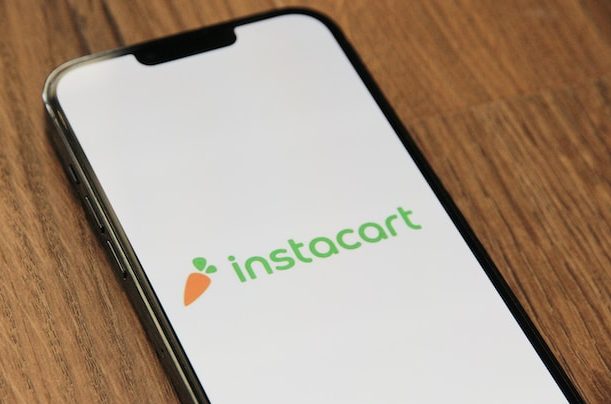Grocery has one of the lowest levels of digitization in any industry. Grocery retailers in the United States spent an estimated $14.2 billion on enterprise IT in 2022, which represents approximately 1% of their total sales. This compares to average estimated technology budgets as a percent of revenue of approximately 25% for telecommunications, 11% for air travel, and 4% for hospital services for the same year.
The grocery industry has attributes not found in other consumer retail categories due to inherent market structure differences like enterprise market structure, disaggregated supply chain, or intense competition from digital-first platforms and the uniqueness of grocery operations such as diverse product assortment, breadth of fulfillment options, or limited personalization.
Given the limitations and challenges, the grocery market in the US is transitioning to the digital world. In 2022, 12% of grocery sales in the United States were online, defined as orders placed online for pickup or delivery. Within online grocery sales, the pickup fulfillment method accounts for 46% of total online sales, while delivery accounts for 54%.
For many commerce categories, digital advertising has provided significant advantages — from precise targeting to the ability for consumers to take immediate action on the ads to exceptional measurement tools. For CPG brands, there has not yet been an advertising solution that combines the actionability and measurability of digital advertising with the ability to move products off the shelves at grocery retail stores.
Instacart believes it can lead grocery innovation by offering modular technology solutions to retailers, customers, and brands. In this article, we tried to understand how does Instacart work and make money. What is the business model of Instacart?
What is Instacart? How does Instacart work?
Instacart was founded in 2012 to bring the grocery industry online and help make grocery shopping effortless. Instacart’s grocery ecosystem and hence the business model includes Retailers, Customers, Brands, and Shoppers.
Instacart started by understanding what consumers want and then built enterprise-grade technologies that allow retailers to meet those needs. Instacart wants to enable any retailer, large or small, to drive online and in-store success and serve their customers better in all ways they choose to shop.
Instacart invented a new model for online grocery shopping by offering consumers on-demand delivery from the stores they know and trust. As of 2022, Instacart helps its retail partners reach 7.7 million monthly active ordereres who spend approximately $317 per month on average on Instacart.
Retailers reach customers through both Instacart Marketplace, where customers can shop from their favorite retailers through the app or website, and retailers’ owned and operated online storefronts that are powered by Instacart Enterprise Platform, an end-to-end technology solution encompassing eCommerce, fulfillment, Connected Stores, ads and marketing, and insights.
As consumers and retailers move online, CPG brands can use Instacart Ads as a new way to reach customers at the point of purchase and within minutes of delivery and consumption. As of 2022, over 5,500 brands are using Instacart Ads and are now more easily discoverable as customers fill their digital carts.
How does Instacart Technology work?
Instacart was built to serve the entire grocery ecosystem. The key pillars of its technology are Instacart Marketplace, Instacart Enterprise Platform, and Instacart Ads. Instacart’s solutions are underpinned by a shared foundation of technology, infrastructure, data insights, and fulfillment that leverages Instacart’s scale and expertise specific to the grocery category.
Instacart Marketplace: Instacart launched its Marketplace in 2012 and quickly became the first company to make online grocery shopping affordable and accessible to households across North America. Over the next decade, Instacart built partnerships with over 1,400 retail banners and over 80,000 stores, serving millions of households with same-day delivery.
Instacart Marketplace helps customers find their favorite products. It provides an innovative ad business that inspires people to try new brands, connects customers to its dedicated shopper community, and helps retailers and customers build deeper relationships.
Instacart Enterprise Platform: Instacart Enterprise Platform is an end-to-end technology solution that powers retailers across all aspects of their business. Instacart’s modular offerings allow retail partners to choose which technologies best fit their needs. These solutions work seamlessly together, so retailers can integrate more efficiently with Instacart than multiple separate technologies.
Instacart Ads: Instacart Ads combines the best of digital advertising — precision, actionability, and measurability — with the ability to directly move products off the shelves at stores, getting these products into customers’ hands within hours. Instacart has many advertising solutions to meet all the brand partners’ needs, including sponsored products, display ads, brand pages, and coupons.
What is the business model of Instacart? How does Instacart make money?
Value Proposition
For Retailers: Actionable business insights empower retailers to make better-informed decisions about assortment, inventory, quantity, and replenishment. Instacart enables retailers new use cases and fulfillment options across consumer and business needs, unlocking remarkable growth and efficiencies through its end-to-end technology solution.
For Customers: Better search results, more intelligent replacements, more seamless checkout flows, and greater personalization that promotes engagement. Customers appreciate shopping online with their favorite national, regional, and local retailers across use cases, desired speeds, and payment methods through an intuitive and personalized experience.
For Brands: More measurable and targeted ad offerings that deliver higher returns and draw more brands to Instacart Ads, which yields benefits for Instacart Marketplace and Instacart Enterprise Platform. Brands can drive high ROI on their ad spend due to Instacart’s deep understanding of customer shopping behavior and preferences. Effective advertising leads to larger average order values for retailers, deals and discounts for customers, and more profound brand affinity.
For Shoppers (who help customers buy in-store or digitally): More seamless and efficient delivery, leading to greater shopper satisfaction and earnings opportunities. Shoppers benefit from strong customer activity through more flexible earnings opportunities and value the opportunity to earn additional income. As more shoppers join Instacart, availability and speed will continue to improve for customers, which will likely increase the frequency and number of purchases of goods from retailers and brands.
How does Walmart make money: Business Model & Supply Chain Strategy
Offerings
For Retail Partners: Instacart provides national, regional, and local retailers with a suite of enterprise-grade technologies for eCommerce, fulfillment, in-store, ads and marketing, and insights to help retailers create a personalized and seamless consumer experience no matter how people choose to shop.
For Customers: Instacart offers a personalized shopping experience as customers browse, search, and order items from retailers they know or discover.
For Brand Partners: Instacart Ads offers over 5,500 CPG brands the tools to run a full-funnel marketing strategy throughout the entire customer shopping journey on Instacart, with solutions designed to drive awareness, engagement, and sales. Instacart’s advertising includes sponsored products, displays, and video ads. Instacart Ads also enables brands to learn more about customer behavior from discovery to purchase, offering valuable insights about optimizing their advertising spend.
For Shoppers: Instacart offers immediate, flexible earnings opportunities for hundreds of thousands of individuals to work as shoppers and help customers. As shoppers prioritize flexibility, Instacart strives to address that preference by offering an opportunity that requires only a mobile device and a car and is often done during the day. Instacart’s shopper app enables shoppers to match with customers, navigate orders to their desired destinations, and receive earnings in one integrated experience.
How does Instacart make money: revenue model
Instacart generated a revenue of $3 billion in 2023, a 20% growth from 2022. Instacart makes money through two revenue streams: Transaction and Advertising. Instacart makes money through fees paid on each order by retail partners and customers and advertising fees paid by brands, less the associated costs of those revenues. The following chart illustrates the economics of a completed order on Instacart, based on the average order in the year ended December 31, 2022.
Gross Transaction Value: GTV is the value of the products sold based on prices shown on Instacart, in addition to applicable taxes, deposits, and other local fees, customer tips, which go directly to shoppers, customer fees, which include flat membership fees related to Instacart+ that are charged monthly or annually, and other fees.
Transaction Revenue: Instacart generates revenue primarily from fees received from end users and amounts paid by retailers for its transaction service, which connects retailers with end users to provide goods by the retailer to the end user. In 2022, Transaction revenue contributed $1.8 bn to Instacart’s revenue. Transaction revenue primarily consists of retailer fees and customer fees.
Advertising and Other Revenue: Instacart generates revenue from the sale of advertising to companies that are interested in reaching end users on Instacart. Advertising products include sponsored products, display ads, coupons, and various other online advertising services.
Instacart also offers software subscription services that enhance the online shopping experience for certain retailers and generate an immaterial amount of other revenue from software subscriptions. Advertising and others contributed $0.7 bn to Instacart’s revenue.
Refer to the below charts to see Instacart in numbers.
Please note that all the information, numbers, and charts were taken from Instacart’s IPO prospectus release on 25 August 2023.
















